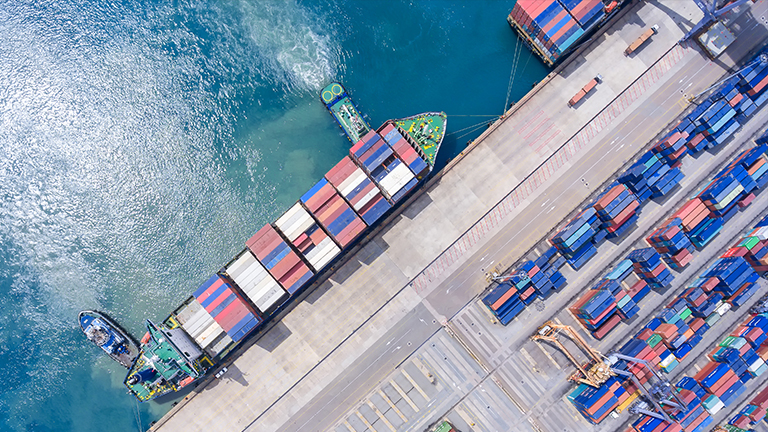Transportation Trends in Commercial & Non-Passenger Vehicles

The future of transportation technology is bright—perhaps even brighter than most can imagine. And even more unexpected than what this future will bring is when it will arrive. The automation, connectivity and electrification of passenger vehicles is nothing especially new, but technological leaps in non-automotive transportation are much closer to reality than we might realize. Here are some of the most exciting and promising non-automotive tech trends reshaping the transportation industry.
Fleet automation
Transportation technology is getting smarter and more efficient, both in areas you might expect as well as some that might surprise you. In an industry as vital to global commerce as trucking, it should come as no surprise that technological developments are disrupting the status quo. Artificial intelligence (AI) stands to keep freight moving long beyond the current limits imposed on human-driven vehicles, and electric drivetrains could vastly improve operational efficiency. Additionally, vehicle-to-vehicle (V2V) systems hold the promise of establishing smart fleets, capable of linking multiple vehicles to enhance logistics and establish more effective processes for moving freight.
Industrial automatic guided vehicles (AVGs)
Industrial equipment in factories and warehouses around the world is getting a jolt from upgraded technology. Automatic guided vehicles (AVGs) may not be the most sexy, sci-fi-worthy implementations of our advanced transportation solutions, but they are helping us work smarter instead of harder. These AVGs range from fork type to tow type to heavy load carrier type, and – by moving product or supplies in quantities or speeds that would be impossible with manpower – they save time, reduce cost and minimize risk.
High-speed rail
On the other end of the sexy, sci-fi-worthy spectrum, there are projects like SpaceX’s or Virgin’s Hyperloop endeavors. These mass transit rail systems aim to connect cities – like Los Angeles and San Francisco, for instance – in two to three times the speed of the fastest contemporary trains. Besides its incredible speed, this system promises advantages like on-demand, non-stop trips thanks to individual passenger pods; unparalleled eco-efficiency, courtesy of proprietary electric motors; and a wide range of safety considerations, from uninterrupted, weather-sealed tracks to fully autonomous conduction.
Smart maritime vessels
These transportation triumphs aren’t confined to the ground. With increasingly high demand placed on global exchange of goods and products, seafaring vessels are as important as ever. Automation of ships stands to radically alter the level of efficiency and safety possible in maritime shipping. More automated systems will mean fewer necessary crew members, and smaller staffs will make more room for cargo, as well as decrease the risk of accidents (most often caused by human error).
Package delivery drones
Package delivery drones may sound like the most farfetched of the list, but it’s being pursued just as diligently and seriously as any of the others. One of the world’s largest and most prevalent online retailers is exploring the possibility of getting packages weighing less than 5 pounds to customers’ homes within a tidy 30 minute window. As one would hope, safety – offered by way of system redundancies, proximity sensors and machine learning – is a paramount consideration in implementing this exciting new delivery system.
Tomorrow’s technology may be making its debut sooner than many realize, and it looks to be taking novel forms that will enhance more than just personal automotive transportation. No matter what the future of transportation looks like, you can rest assured that Avnet can help you on your path to market, wherever you might find yourself in the product lifecycle.



